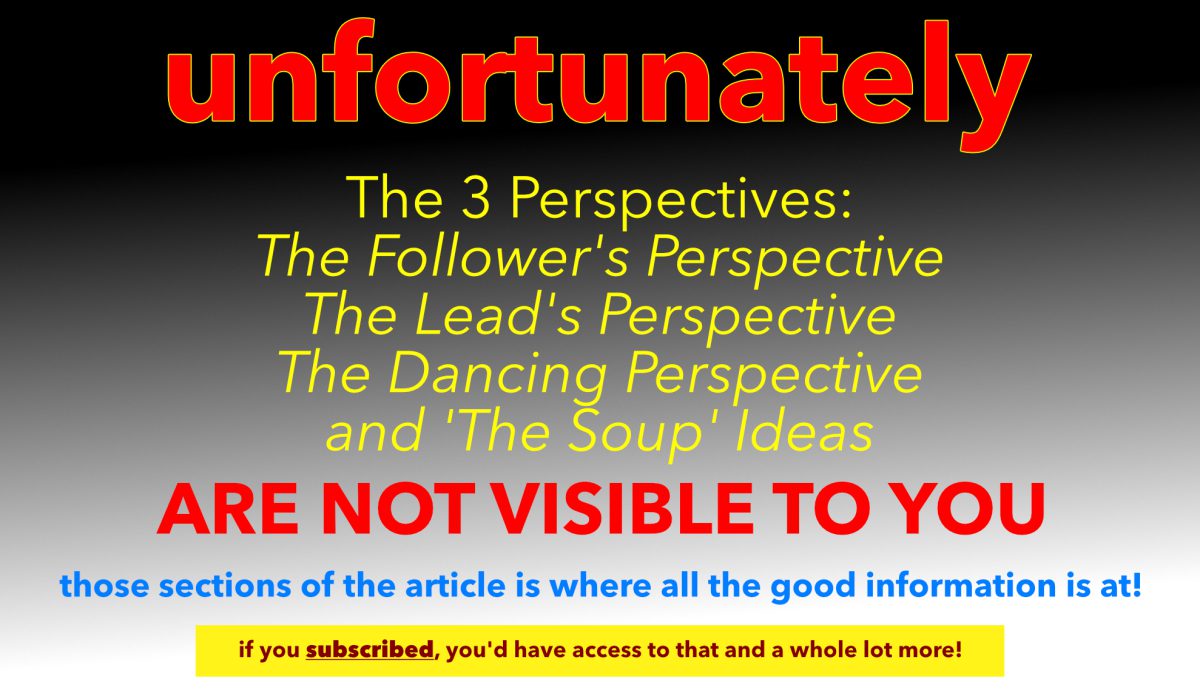The word ‘parada’ translates into English as ‘stopped’. And that’s exactly what it is. A stop. From a Tango perspective this is a well worn piece of tango vocabulary that most people see as an element towards engaging the illusion of ‘intimacy’ of the dance, or it’s ‘steamy’ aspects. Anyone inside the dance knows that the ‘steamy’ thing is just that, an illusion, and that there’s real work to be done to make this venerable piece of tango vocabulary useful and musical. The vocabulary gets its name from the fact that we are stopping but it’s an unusual stop. It’s a stop not because you’re stopping the Lead’s motion, but in fact stopping the Follower’s motion. It’s more of an interruption really, because the ‘stop’ is momentary. With that thought in mind, let’s talk “Paradas”, what they are and how they’re useful for both roles of the dance.
What is a Parada ? The Parada is a stop of motion, usually for the Follower. The Follower is being led to a position where they can not proceed any further due to a physiological obstruction from the Lead’s leg and foot being deliberately, and decidedly, put into the walking path of the Follower. The Follower will be ‘asked’ to step over the obstruction presented by the Lead and from that ‘step over’ the Follower has lots and lots of options.
The Parada is usually used as an accent to a particular point in the music where a Pause or Stop has happened in the music. However, more of then than not, that’s not its primary usage. It’s just another piece of vocabulary in the Lead’s arsenal of vocabulary as a way to express the intent of the music that is currently occurring at that moment in time.
From the Follower’s side of the equation typically after the Follower has been led to a ‘stop’, they have a few options and opportunities to engage an adornment or embellishment. The more common of those are where the Follower will take their free foot and slide it up the Lead’s leg and then down the other side, and then proceed towards the next step.
The Free Tip. The Parada is the Follower’s choice. They can elect NOT to step over, but rather to step around, especially if the Parada is done in open embrace! The video does not go over this point but does show you a few rather important aspects towards this ideal.

About The Video. This video comes in at 33m:08s in length in 13 Sections. Both lead and follower technique are combined and integrated into the video.
Section 1 – Introduction – 00:00:52
Section 2 – Building A Parada – 00:06:59
Section 3 – Parada Caveat – 00:00:37
Section 4 – Open Side Parada – 00:01:32
Section 5 – Closed Side Paradas – 00:00:58
Section 6 – Embrace Indicators – 00:01:24
Section 7 – Foot Awareness – 00:01:34
Section 8 – Rules for Decoration (Followers Only) – 00:01:51
Section 9 – Follower Embellishments for Paradas – 00:03:46
Section 10 – Multiple Paradas – 00:03:15
Section 11 – The Step Over – 00:04:23
Section 12 – Another Idea – 00:00:35
Section 13 – Gancho/Barrida from Parada/End – 00:04:27

